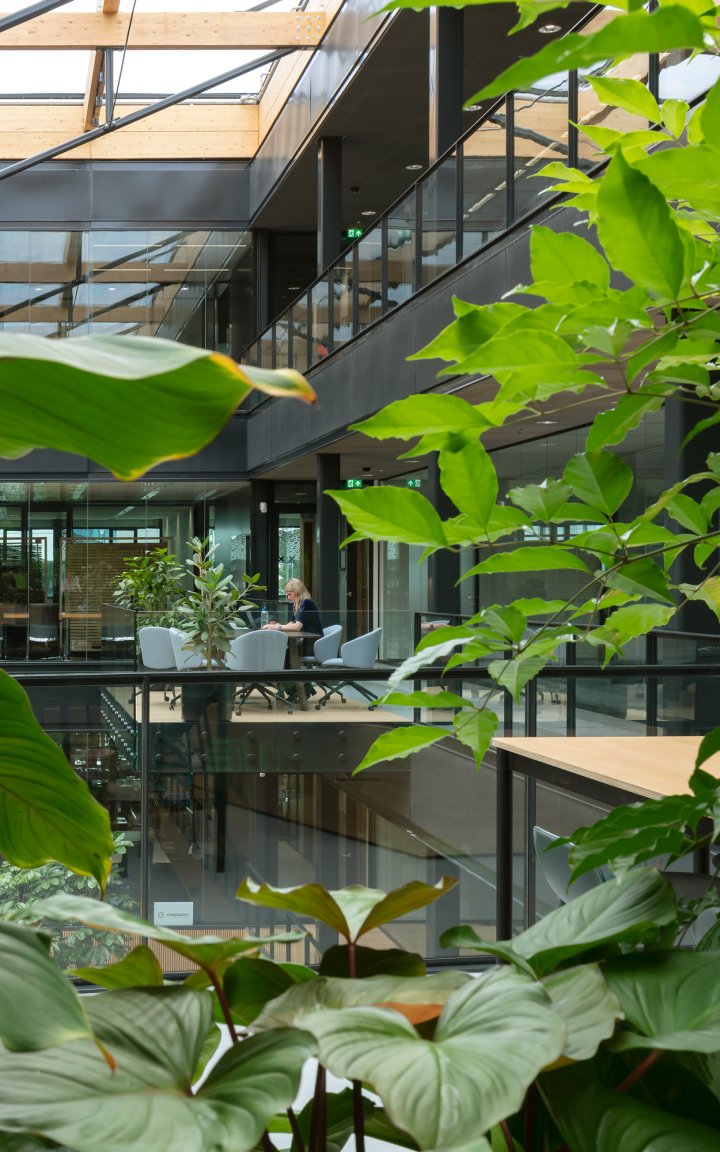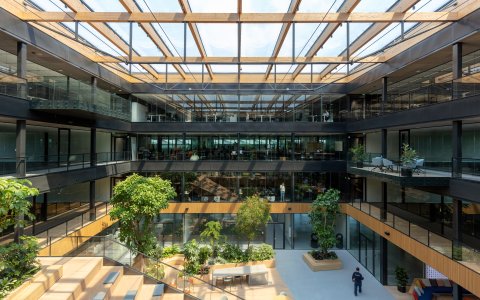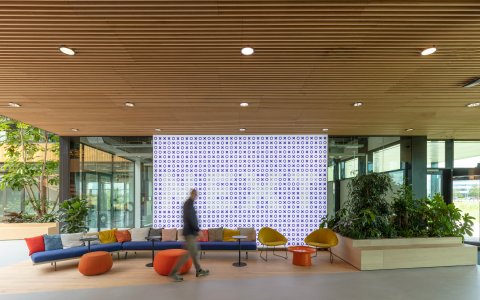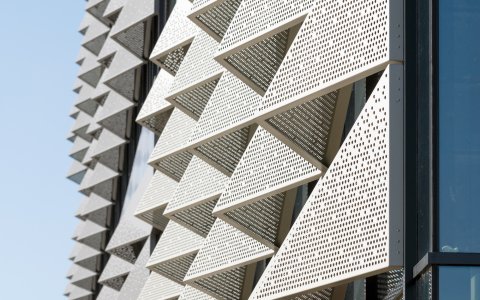
NEXT Delft, Delft
For the past few years, Delft University of Technology’s research and innovation campus has included two YES!Delft buildings, designed as dedicated incubators for start-ups. To ensure the university’s ability to accommodate the growing number of promising spin-offs—a necessity for the region and the country as a whole, given the role of these spin-offs in shaping our future economy—the university must expand its capacity. EHA was commissioned by property management company Stone22 and the ASR Dutch Science Park Fund to design a new accelerator building, named NEXT Delft. The building provides the necessary facilities for scale-ups to test new techniques and develop prototypes. It also serves as a venue for talented tech start-ups to meet, interact, collaborate and share ideas.
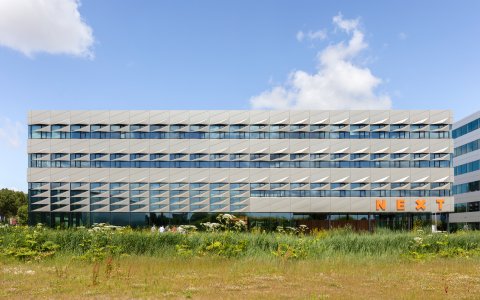
Project details
Name NEXT Delft
Client Stone22
Owner ASR Dutch Science Park Fund
Location Delft Campus South
Status Delivered 2022 (Phase 1)
Architect Ector Hoogstad Architecten
Building cost management IGG Building Economics
Building services, structural and fire safety engineering Nieman Raadgevende Ingenieurs
Contractor De Vries en Verburg
Construction IMd Consulting Engineers
Interior design EHA in collaboration with up architecture
Photography Marcel van der Burg
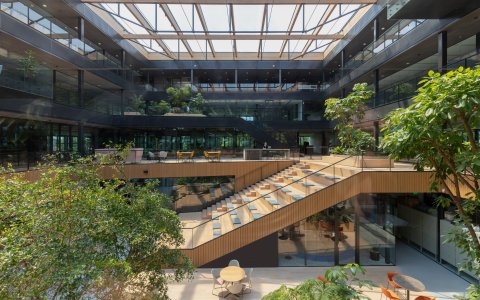
NEXT is located on the corner of Molengraaffsingel and Huismansingel and will eventually boast about 20,000 m2 of floor space. Just over half of this is already available, thanks to the recently completed first phase of construction. The total space will be spread over four floors, with the ground floor boasting double-height ceilings to accommodate production facilities, named "makerspace", in other words, a space dedicated to the small-scale production of new inventions and to experimenting with innovative technologies. The first floor offere more flexibility, enabling its use either as production space or as office space; while the upper two floors are purely office space.
The heart of the building is its centrally located atrium. This is the space around which the social life of the building revolves, and is designed to accommodate co-working and exhibitions, and provide access to the auditorium and meeting centre. One of the atrium’s most striking features is its wood frame skylight, filled with transparent cushions of air. The space also boasts a variety of plants and trees, complementing the wood finishes and, in combination with the latter, helping to create a healthy and relaxing working environment. It gives the space a lot of visual appeal, increasing its attraction as a co-working area and as somewhere to hang out with colleagues. In short, this atrium is the key in turning NEXT from a collection of scale-ups into an actual community.
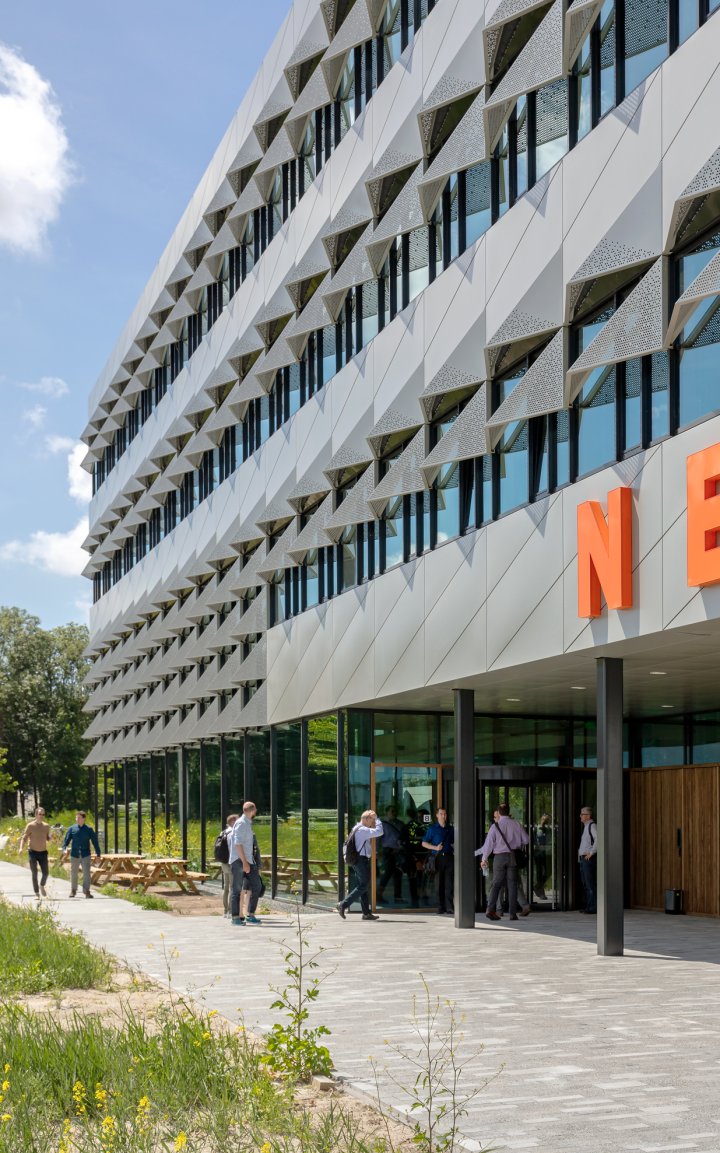
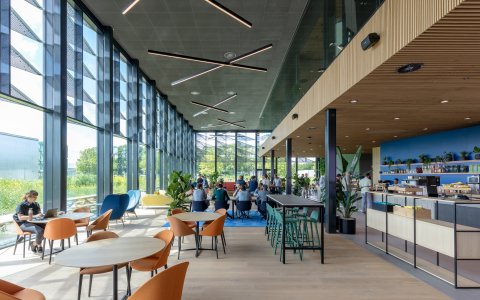
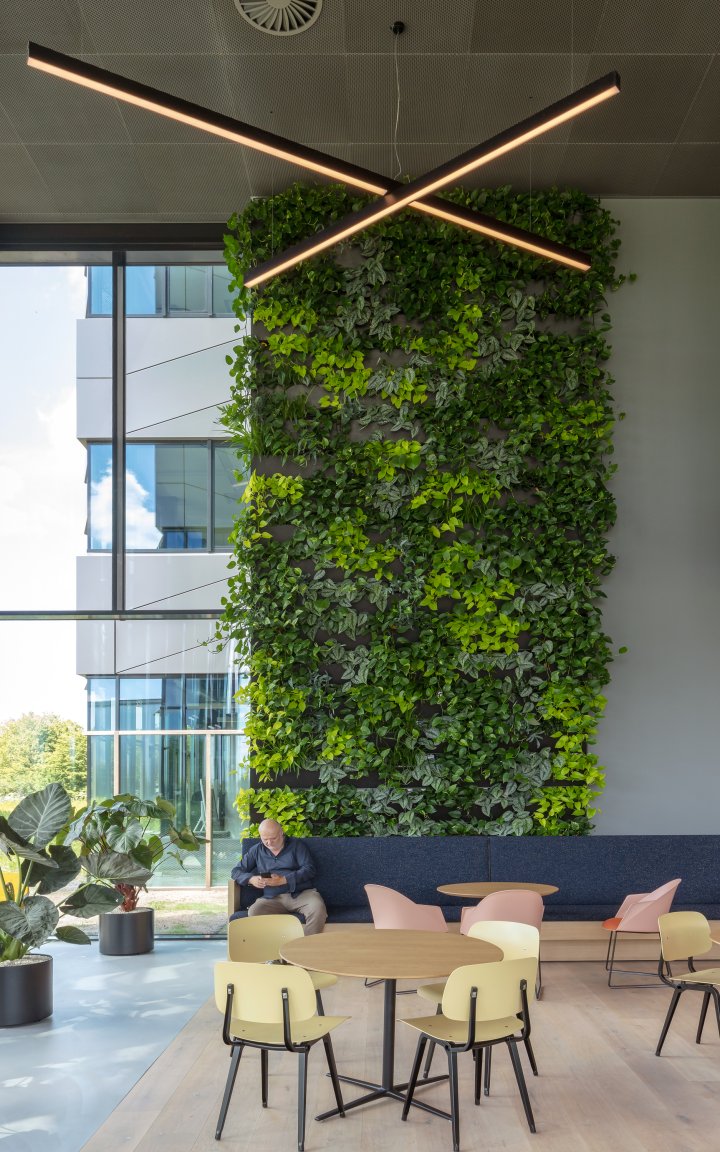
The communal areas are equipped with state-of-the-art facilities for meetings, presentations and co-working. These areas have been specifically designed to match the vibe of fast-growing tech companies: warm and welcoming, but with a bit of edge. Thus, “grown-up” enough to impress major investors (and competitors), but not so much as to lack drama. The building — particularly the bleacher-like staircase — really invites creatives to use it as a stage, be that for presentations or to showcase their products and activities.
Located on the sunny south-facing side of the building are a publicly accessible food court, community space and an outdoor terrace surrounded by greenery and overlooking a stream. This part of the building is set to become the social hub of the entire campus, which is one of NEXT’s ambitions. In fact, this is precisely why the food court is open to the public, and why the meeting facilities can be rented by the hour by external parties. The number of bookings made in the first few months of this commission have been simply staggering.
The building’s exterior is a playful but intriguing marriage of high-tech and simplicity. The ground floor is almost entirely see-through, with wood cladding and window frames ensuring a direct relationship with the surrounding landscape. Above this are continuous strips of glass, interspersed with metal cladding featuring subtle diagonal lines. This element functions as both spandrel and solar shading, its protrusions lending the building a truly striking appearance. In this regard, NEXT reinforces the architectural language of the Delft University of Technology. It also complements the other two buildings by Ector Hoogstad Architecten, namely the Faculty of Applied Sciences and PULSE, the university’s education centre. Meanwhile, an “Applied Physics” building, also courtesy of EHA, is currently under way.
Thanks in part to its kinetic façade which prevents solar gain without compromising the views of the surroundings nor the admission of daylight, NEXT Delft is an exceptionally sustainable building, and is on track to achieve a BREEAM Excellent rating.
